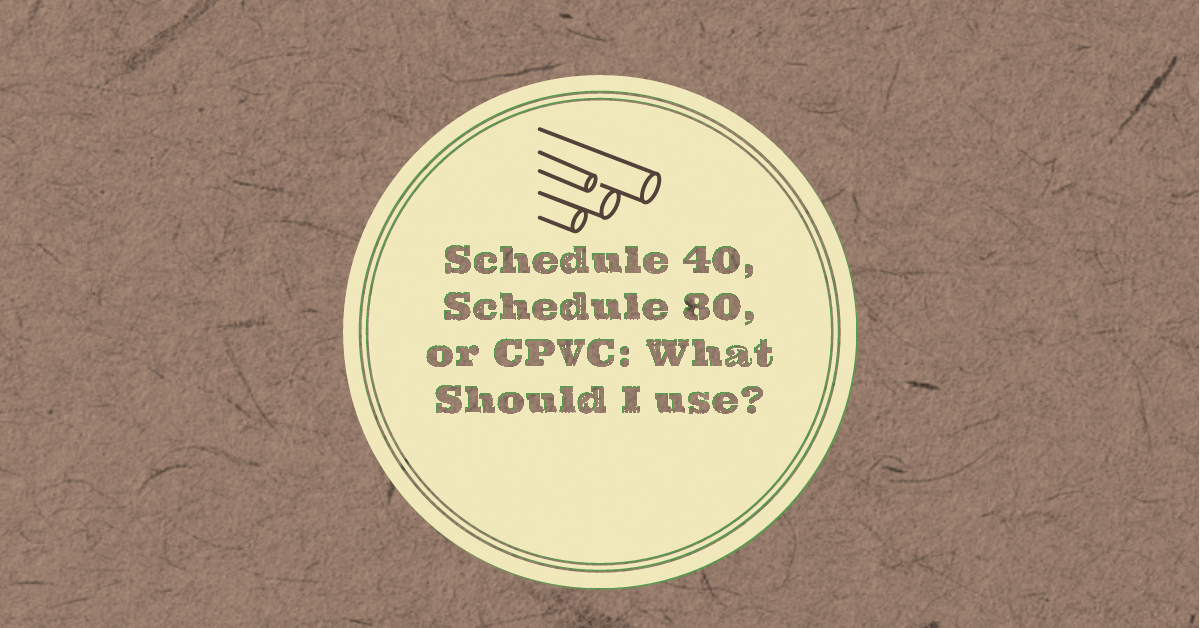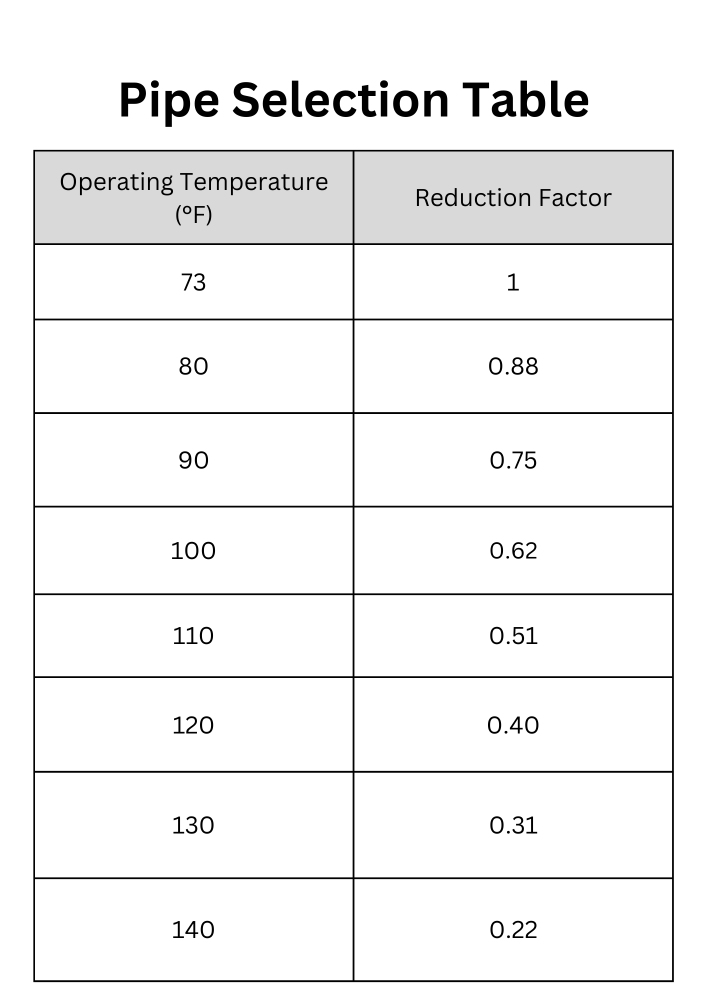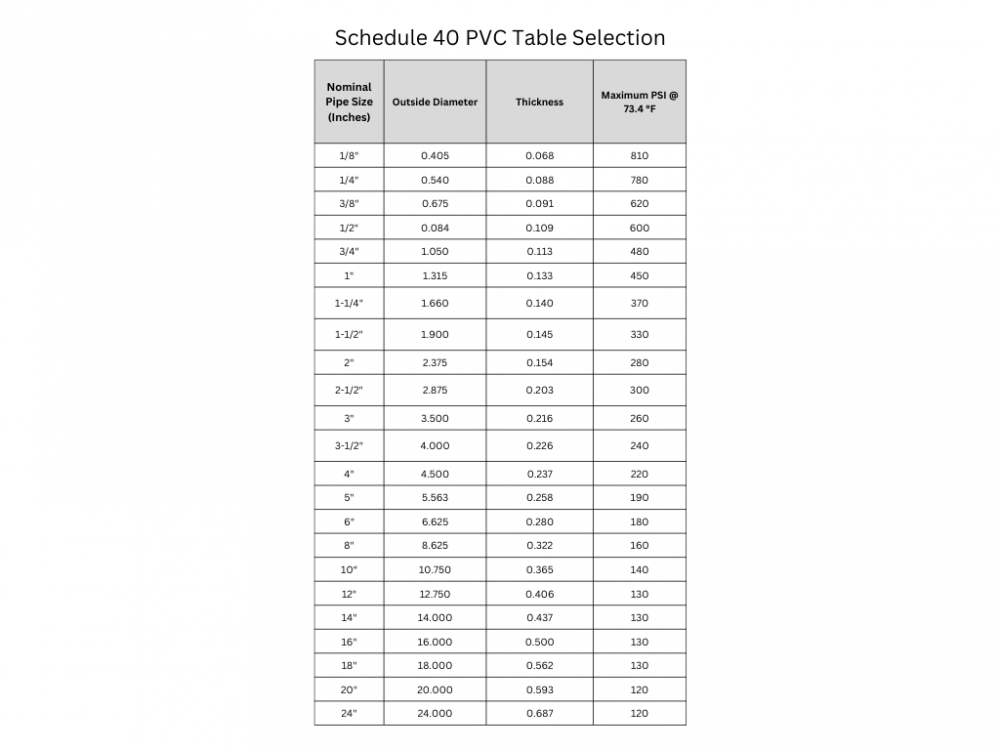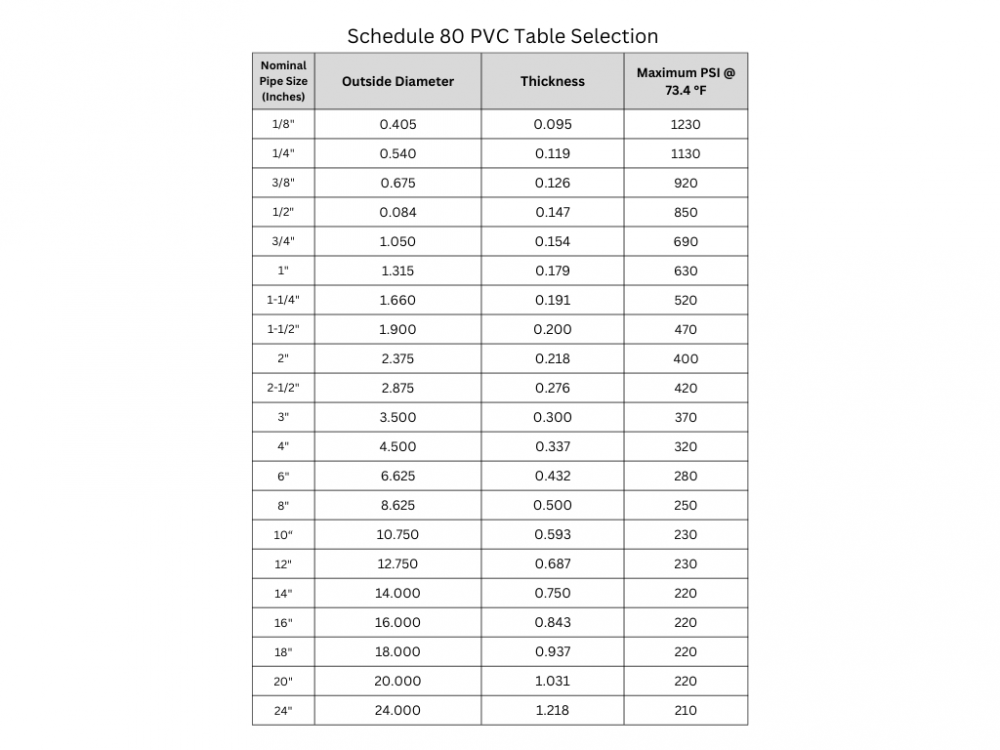Schedule 40, Schedule 80, or CPVC: Which One Should I Use?

Before starting any PVC project, it's essential to select the right type of PVC so that the work can be done quickly and economically. Since each type of PVC has different costs, it's important to ensure that the PVC you choose for your project is not only durable enough for the job at hand but also cost-effective; over-engineering can cost a lot of money. In this article, we'll review the factors that determine which type of PVC is suitable for your work. Some jobs may not be able to be completed with PVC, but those are beyond the scope of this article; if your job cannot be repaired with PVC, contact us, and we'll review your project and recommend the best material for your job.
What chemicals or mediums are being used?
The first factor we consider in determining the suitability of a job for using Schedule 40, Schedule 80, or CPVC is the material being conveyed. While PVC is primarily inert, it is a polymer and reacts with some materials. If your system will convey chemicals of any kind, you should consult the tables below to ensure that PVC is capable of performing the task at hand.
What is the temperature range of my system?
As PVC is a thermoplastic, it is formed from resin under heat to create the pipes and fittings comprising Schedule 40, Schedule 80, or CPVC. As you may have guessed, that means PVC cannot withstand extremely high temperatures; the pipe will start to melt at a certain point. However, before the pipe reaches the melting point, it loses some of the properties that make PVC a desirable choice in the first place. As PVC heats up, the maximum pressure of the pipe and fitting decreases. Since PVC properties change with temperature, 73°F is used as the standard temperature for which PVC pipes and fittings are rated; the further the temperature is from the 73°F rating point, the more PVC properties listed change. PVC has a maximum operating temperature of 140°F. PVC is classified according to the following table:

Example: 4" PVC SCHEDULE 40 @ 120°F =? 110 psi x 0.40 = 44 psi max. at 120°F
At what PSI does the system run?
The final factor in determining the fitting for PVC is actually a factor we've discussed a lot: pressure. As discussed, the maximum pressure a PVC system is capable of withstanding decreases with increasing temperatures. As a result, we must apply the reduction factor from the previous section to determine which types of PVC can meet our needs. Below you can find a table of maximum pressure for each of the different types of PVC by width; be sure to multiply by the reduction factor for your project if necessary.


If you have any questions about choosing Schedule 40, Schedule 80, or CPVC Pipe, leave them in the comments section below. If you enjoyed this article, please take the time to like us on Facebook, Instagram, Pinterest, or Twitter to keep apprised of the latest and greatest in drainage technology as well as get the latest exclusive deals! If you're making your first purchase, sign up for the newsletter to get a 1-time-use 5% off coupon!













Comments